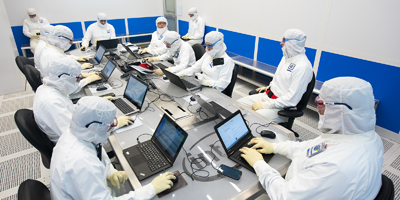- Joined
- Aug 20, 2006
- Messages
- 13,000
Wall Street analyst Hans Mosesmann believes it could take as long as seven years for Intel to fix its business, which is reportedly suffering due to the company’s “broken” 10-nanometer process technology. While these chips may finally see the light of day at the tail end of 2019, the effect of being “behind by a year or two in terms of process technology” is becoming increasingly evident: Mosesmann points out that AMD’s stock is seeing an “unprecedented” rise and believes they could have 25 percent of the market in a few years.
Intel has teased the large-scale release of its next-generation 10 nanometer chips for years, promising they'd deliver better performance with lower power usage than chips built with the company's older generation, 14 nanometer technology. Intel said last month that its 10 nanometer chips will be released for holiday 2019. Samsung is already manufacturing 10 nanometer chips, and AMD plans to launch 7 nanometer products later this year. One nanometer equals one-billionth of a meter.
Intel has teased the large-scale release of its next-generation 10 nanometer chips for years, promising they'd deliver better performance with lower power usage than chips built with the company's older generation, 14 nanometer technology. Intel said last month that its 10 nanometer chips will be released for holiday 2019. Samsung is already manufacturing 10 nanometer chips, and AMD plans to launch 7 nanometer products later this year. One nanometer equals one-billionth of a meter.
![[H]ard|Forum](/styles/hardforum/xenforo/logo_dark.png)
